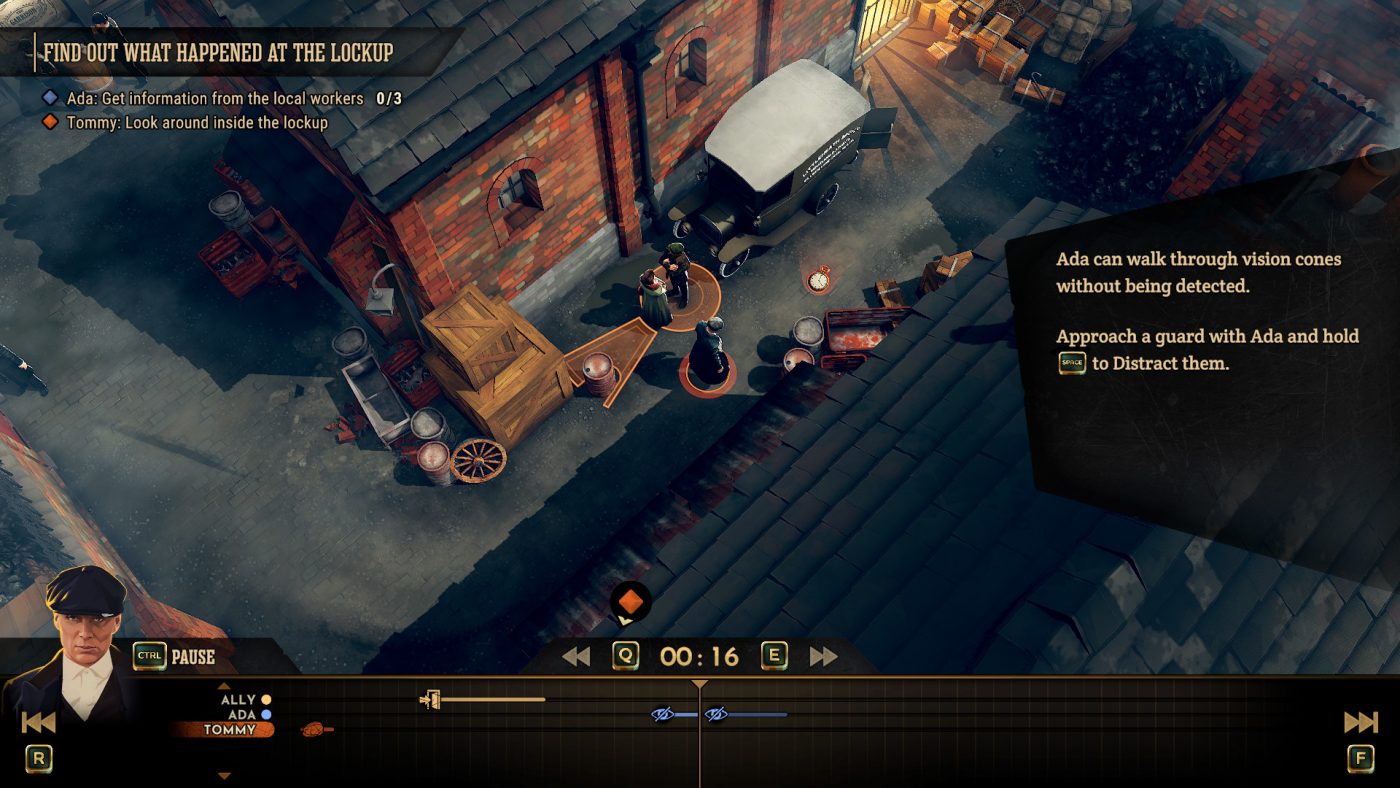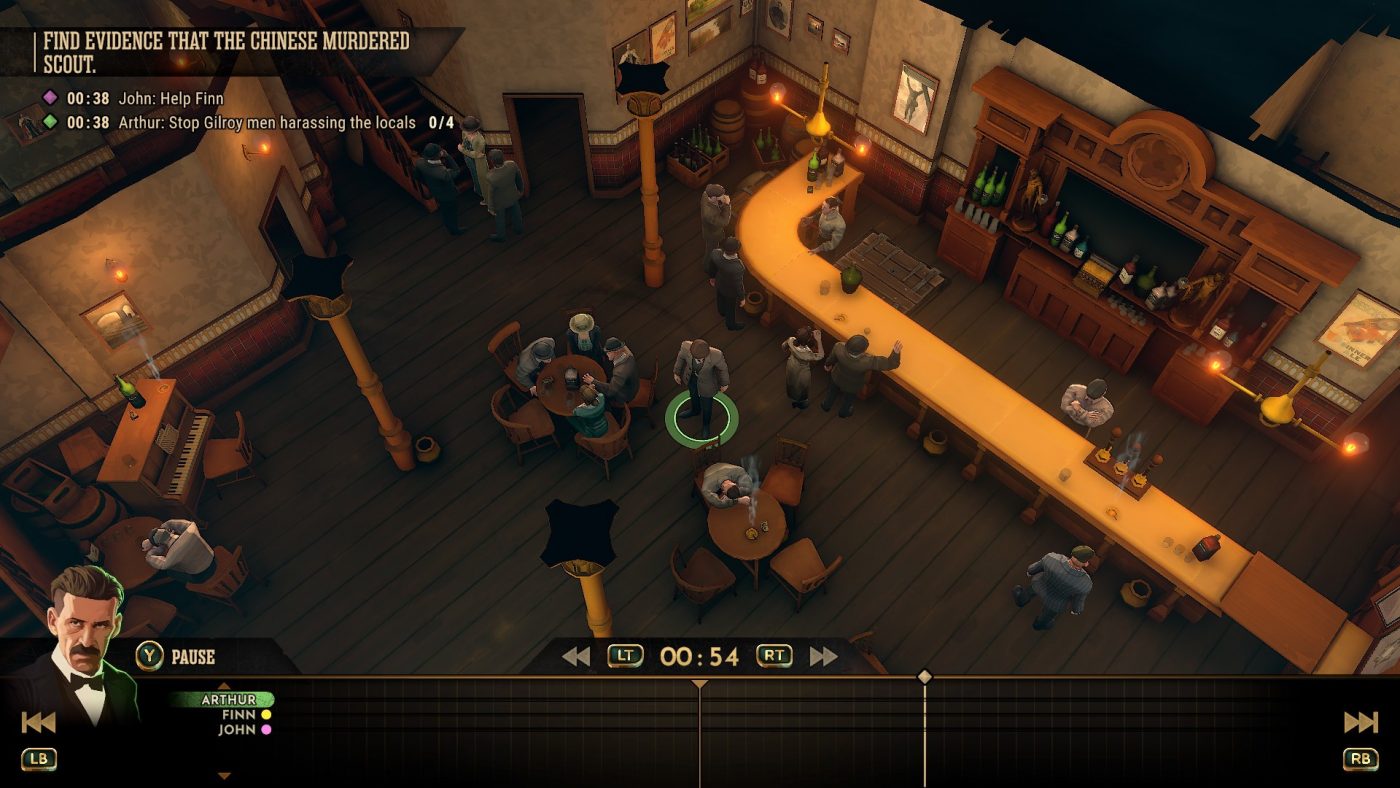I’ve been a fan of FuturLab’s output for years now. For ages I was shouting from the rooftops how Surge Deluxe was one of the Playstation Vita’s secret best games and have been clammering for a new game in the Velocity series. For now though they’ve turned their attention to a world I’m not too familiar with, despite being set close to where I live – the Peaky Blinders.
Set around the end of the first world war, it’s a story revolving around a crime family in Small Heath and the various troubles they find themelves in with rival gangs and police. That’s the basics of it from what I garner from the games cut scenes, which happen at the start and end of each level, good news is you don’t have to be fully up to date with the Peaky Blinders to really understand whats happening. It does a decent job of explaining what role each character plays and what you must do in the upcoming level.
The game itself is set across ten levels from an isometric viewpoint where you can control multiple members of the Peaky Blinders as they need to complete objectives. With each member having unique abilities you’ll need to utilise each of their skills to finish the level, all in the time limit you’re given. The most unusual part of Mastermind is the way it controls, for better or worse.

While you can take turns with each character during the level, this isn’t the way to play the game, in fact you won’t get very far because the time limit means you won’t make it past the second level. What you do is control one character, then once you’ve reached as far as you can with that person, then you rewind back to the beginning, then control the other character. This way while you’re controlling the second character, the one you controlled at the beginning will go through the movement you did previously. As the game progresses it gets more complicated where you can be controlling four characters at the same time, each with their own objectives and move-set. The key again is to make sure using the games rewind system that each character is always doing something that progresses the level. To aid you, at the bottom of the screen is something which resembles a musical bar, where you can quickly skip around to the important actions each character has performed, such as opening doors or flipping switches. It’s a clever idea, if a little stressful.
As previously mentioned each character has their unique traits. Ada is able to distract guards so others can slip past, Finn can crawl through small gaps, Arthur can break through weak doors and start fights with guards, and there are others too. The game does a fairly decent thing by showing you the rough direction each member should be headed thanks to each character having a specific colour circle on the screen. That way you won’t end up on the wrong side of the map causing you to start it all over again. That said, the game is quite generous in that it allows you to save the level anytime you want. So if you find yourself, after many tries, finally beating a specific part of a stage then you can just quick save and never have to worry about it again.

As the game progresses however the game can become fiddly, not helped by the cumbersome controls. Pressing the d pad to select what character to control, using the triggers to rewind, bumpers to skip to certain parts of the timeline you’ve created. When you’re dealing with more than a couple of characters it can become overwhelming to some. In a later level I was greeted by multiple switches and doors that needed to be held, only it wasn’t clear which switch held what door open, not to mention they also required two people to activate said doors. It led to the most frustrating time I had with the game as it became trial and error of rewinding back to the beginning and starting over when you realise you’ve lost most of your time to trying the wrong switch combinations.
At only ten levels it’s not a long game, but it does have a number of collectibles and the game is really all about beating your previous time. Maybe that’s some of that old FuturLab DNA creeping in? Nevertheless, as a concept it’s interesting if flawed. A few control tweaks here and there, and a little refinement of some of the level design and it would be a winner. As it stands though, it’s a good if unspectacular entry in FuturLab’s stellar catalogue.

